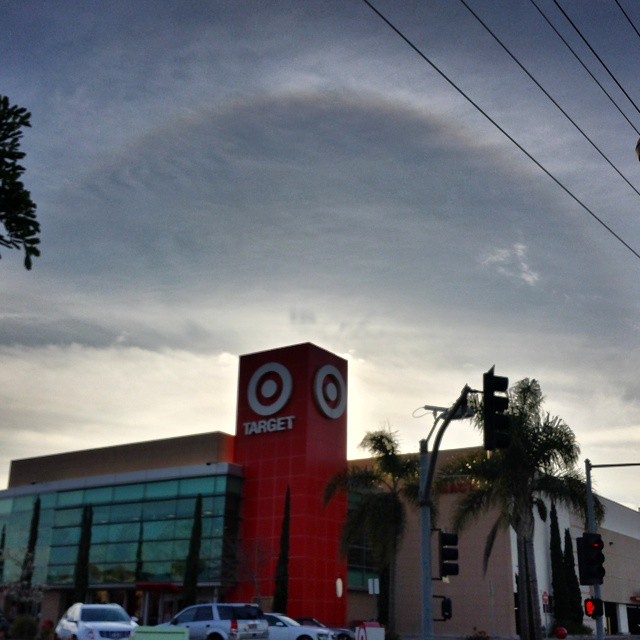
Ring around the Target. I found the perfect spot to block the sun and view this ice #halo.

Ring around the Target. I found the perfect spot to block the sun and view this ice #halo.
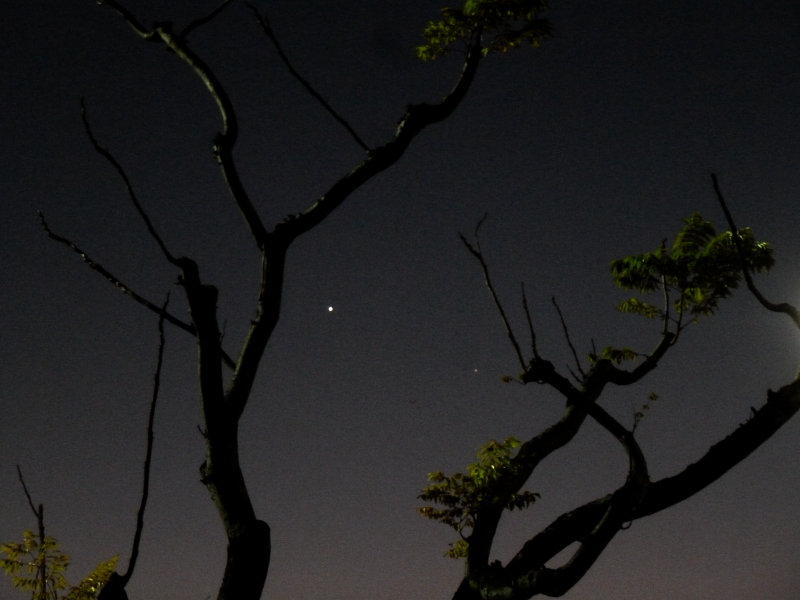
I’ve been watching Venus and Mercury move toward and away from each other over the past week and a half as I leave the office, when I’ve had a clear view anyway. Tonight I caught a different view of the pair of planets, framed by the almost-bare branches of a tree.

I walked out of the office building this evening and just stopped. There, framed by the treetops along the street and the awning and wall of the next building over, was clearly Venus, which I hadn’t seen in months (since the last time it was visible in the evening), and below it a pinprick that, unless I’m mistaken, was Mercury (which I’ve only ever seen on a handful of occasions). It’s certainly in the right place, and I waited to see if either light would move (there’s an airport literally across the street) before deciding that they were both planets.
A few minutes earlier, Mercury would have been too faint. A few minutes later, it would have been below the trees. Not long after that, Venus would have been too low to see as well.
Update! The next two nights were too cloudy to see anything, but Friday evening I was able to spot them again! You can really see how much Mercury has moved relative to Venus in just three days.
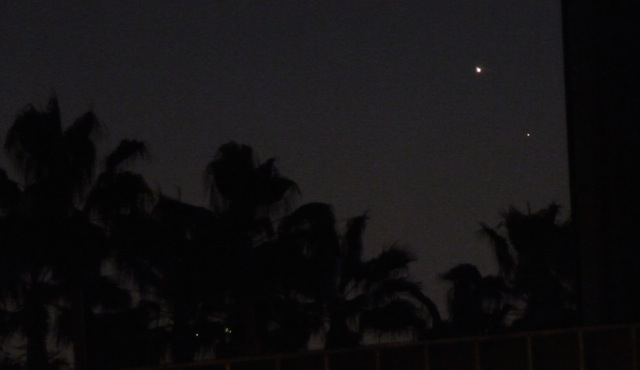
Update 2! And here’s the view the following Tuesday, one week after the first shot. I had to move to the left a few feet since they were behind the building now, which is why the light pole is visible this time. In retrospect, I wish I’d snapped it in all three shots, because that way I’d be able to make sure I was presenting them all at the same zoom level. I’ve been eyeballing it, and I think it’s close enough to get the idea across.
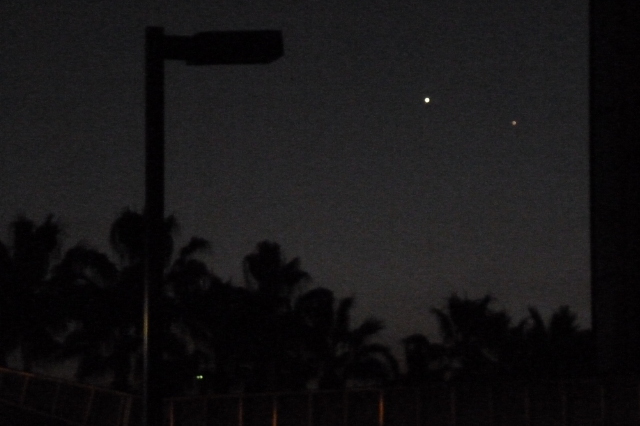
I was expecting to see more snow on the San Gabriel mountains after yesterday’s storm, but was kind of disappointed…until it became clear that the bulk of the snow was on another mountain range. Saddleback was bright white, visible shining as far away as Carson as we made our way toward Orange County. Snow not only reached further down the slopes than usual, but even the mountains to the south were dusted with white, which has never happened in my memory. (If I have my bearings right, they’re just west of Lake Elsinore.)
Since we were going to the Irvine Spectrum on our way to our evening plans, I figured I’d try to match some scenic views from years past before we headed into the mall to take the kiddo to the ice skating rink and Ferris Wheel.
Yes, that’s a Wyland whale mural on the side of a power plant. This plant in Redondo Beach, California is set to be decommissioned when new environmental protections go into effect, and the city and plant owner have been debating* the future of the site.
*To put it mildly!
Originally posted on Instagram with a square crop and filter.
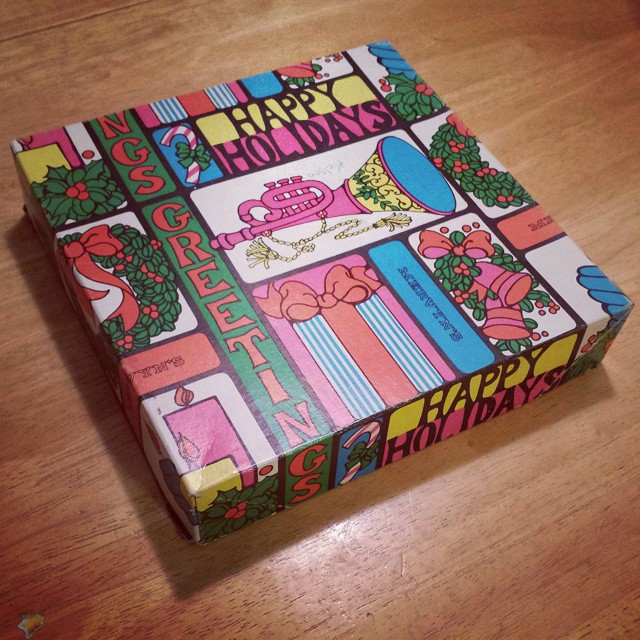
I found this old Mervyn’s box from the 80s in with the Christmas ornaments when we set up our tree. Yes, we actually managed to get a tree set up this year!